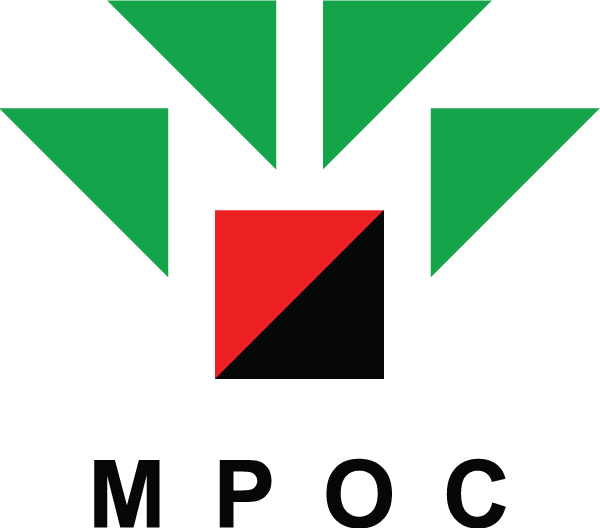Archive
2022
28 Mar - 01 Apr 2022
ASSESSING 2022: MANAGING OPPORTUNITIES AND RISKS
14 - 18 Nov 2022
MITIGATING THE NEXT WAVE OF MARKET UNCERTAINTIES
2021
05 - 11 Apr 2021
Section 1: Price Direction
•
05 - 11 Apr 2021
Section 2 : Special Focus on the US
18 - 24 Oct 2021
Section 1: Oils & Fats Supply, Demand and Outlook
18 - 24 Oct 2021
Section 2: Opportunities for Palm Oil in Asian Market
2020
24 Feb - 01 Mar 2020
Section 1 : CPO Price Trend
24 Feb - 01 Mar 2020
Section 2: Global Palm Oil Market Opportunities
22 - 28 Jun 2020
POINTERS ON THE PRICE TRENDS
2019
18 - 24 Feb 2019
Section 1: CPO Price Trend
25 - 24 Feb 2019
Special Focus - India
19 - 25 Aug 2019
Section 1 : CPO Price Trend
19 - 25 Aug 2019
Section 2: Special Focus
2018
29 Jan - 04 Feb 2018
Section 1: CPO Price Trend
29 Jan - 04 Feb 2018
Section 2 : Global Palm Oil Market Focus
06 - 12 Aug 2018
Section 1: CPO Price Trend
06 - 12 Aug 2018
Section 2: Global Palm Oil Market Focus
2017
20 - 26 Feb 2017
Section 1: Price Directions
20 - 26 Feb 2017
Section 2: Market Challenges and Opportunities
21 - 27 Aug 2017
Section 1: Palm Oil Price Fundamentals
21 - 27 Aug 2017
Section 2: Regional Focus : CIS Countries
2016
22 - 29 Feb 2016
2016 Market Direction - Twists and Turns of Palm Oil Prices
22 - 28 Aug 2016
Section 1 : Palm Oil Price Fundamentals
22 - 28 Aug 2016
Section 2 : Trade Issues and Market Prospects
2015
23 Feb - 01 Mar 2015
Opportunities, Challenges And Trend In 2015 CPO Price
17 - 23 Aug 2015
Second Half 2015 - Anticipating Market Price Direction
17 - 23 Aug 2015
Special Focus: Indian Sub-Continent
2014
17 - 24 Feb 2014
Anticipating 2014 Palm Oil Price Direction
25 - 31 Aug 2014
2nd Half 2014: Market Challenges, Predictions And Directions
2013
18 - 27 Feb 2013
Mapping The Palm Oil Price - 2013 Market Perspective
•
Palm Kernel Cake: Inherent Properties Raise Global Feed Market Opportunities
22 - 29 Jul 2013
Prospects For Second Half Of 2013 - Managing Price Fluctuations
2012
13 - 20 Feb 2012
2012 Price Direction, Issues & Challenges
•
06 - 17 Aug 2012
Palm Oil : Challenges, Opportunities And Latest Market Directions
2011
07 - 17 Feb 2011
Challenges, Opportunities And Price Direction
08 - 16 Aug 2011
Challenges, Opportunities And Latest Price Trend
2010
02 - 08 Aug 2010
2010 Year End Prospects - What Lies Ahead?
Login
Error
Reset Password

Error
Register

Error

POINTERS
LOGIN /
REGISTER




ORGANIZED BY:

Mapping The Palm Oil Price - 2013 Market Perspective:
Palm Kernel Cake: Inherent Properties Raise Global Feed Market Opportunities

Mr. Lim Teck Chaii & Ms. Fatimah Zaharah
Mr. Lim Teck Chaii assumed the post of Market Analyst for MPOC since March, 2000. His responsibilities in MPOC includes delving deep into business issues and make use of the knowledge for the betterment of the organisation’s programmes. He has served as an analyst for Africa and Europe before being assigned to the Asia- Pacific Region in 2007. Prior to joining MPOC, he worked as an analyst for the Lembaga Tabung Angkatan Tentera, UMBC Securities and KAF Discounts Berhad. He holds a B. Econs. (Stats) and MBA ( Accounting ) from University of Malaya. He also has experience in presenting papers at international oils and fats conferences.
VIEW PROFILE
Palm Kernel Cake (PKC) has moved up steeply in the value chain. From an average annual price of US$50/MT that was traded in 1999, the price of PKC has increased by approximately four times to average at US$212/MT in 2012. Research into the applications for PKC, backed by product promotions and the advertising of its inherent properties, has made possible the price jump. These efforts have both introduced new applications and opened up new markets for PKC at a good price, with the good commercial values in PKC supporting this price movement. From the business angle, PKC is currently the most competitive oilmeal traded in the market. At the end of December 2012, PKC traded at US$212/MT and this is a steep discount of US$315/MT off soymeal, which was priced at US$563/MT. Users of PKC are guaranteed availability of supply throughout the year because it is obtained from a perennial crop and PKC appears to be environmentally greener, compared with the other major oilmeals that are derived from seasonal crops. From the nutritive angle, PKC is rich in protein and carbohydrate content. As such, PKC is generally classified as an energy- and protein-based feed ingredient. PKC has a beta-carotene content of 4.3-11.8 mg/kg; 0.35 mg/kg of Vitamin E; and it is free from aflatoxin, toxic metals, heavy metals, pesticides and dioxins. Fresh PKC has on average 10% palm kernel oil. PKC is occasionally extracted to yield kernel oil to increase its product value. Protein-wise, the total amino acid content of PKC has a high bypass rate of 65% to 75%, implying that it has high protein absorption. Samples of global feed formulation we have collected show that PKC has been used in many countries and for many types of animals, such as freshwater fish, beef cattle, dairy cattle, sheep, swine, broiler and layer chicken. Growing populations and affluence are other factors that help the PKC price to increase. This is based on the reasoning that meat is more desirable compared with vegetable-based food, because vegetable food is relatively more dull and bland. Despite the current low usage of PKC, it is expected to gain more dominance in the global market as a result of its attractive pricing and inherent properties. For example, in China and Europe, PKC accounts for only 0.4% and 1.8% of the compound feed formulation. Globally, it accounts for only 2.3% of the oilmeals usage.
REGISTER OR LOGIN TO VIEW FULL REPORT
REGISTER OR LOGIN TO VIEW PRESENTATION SLIDES
Questions & Answers
Please login to post comments.
Facebook SDK returned an error: